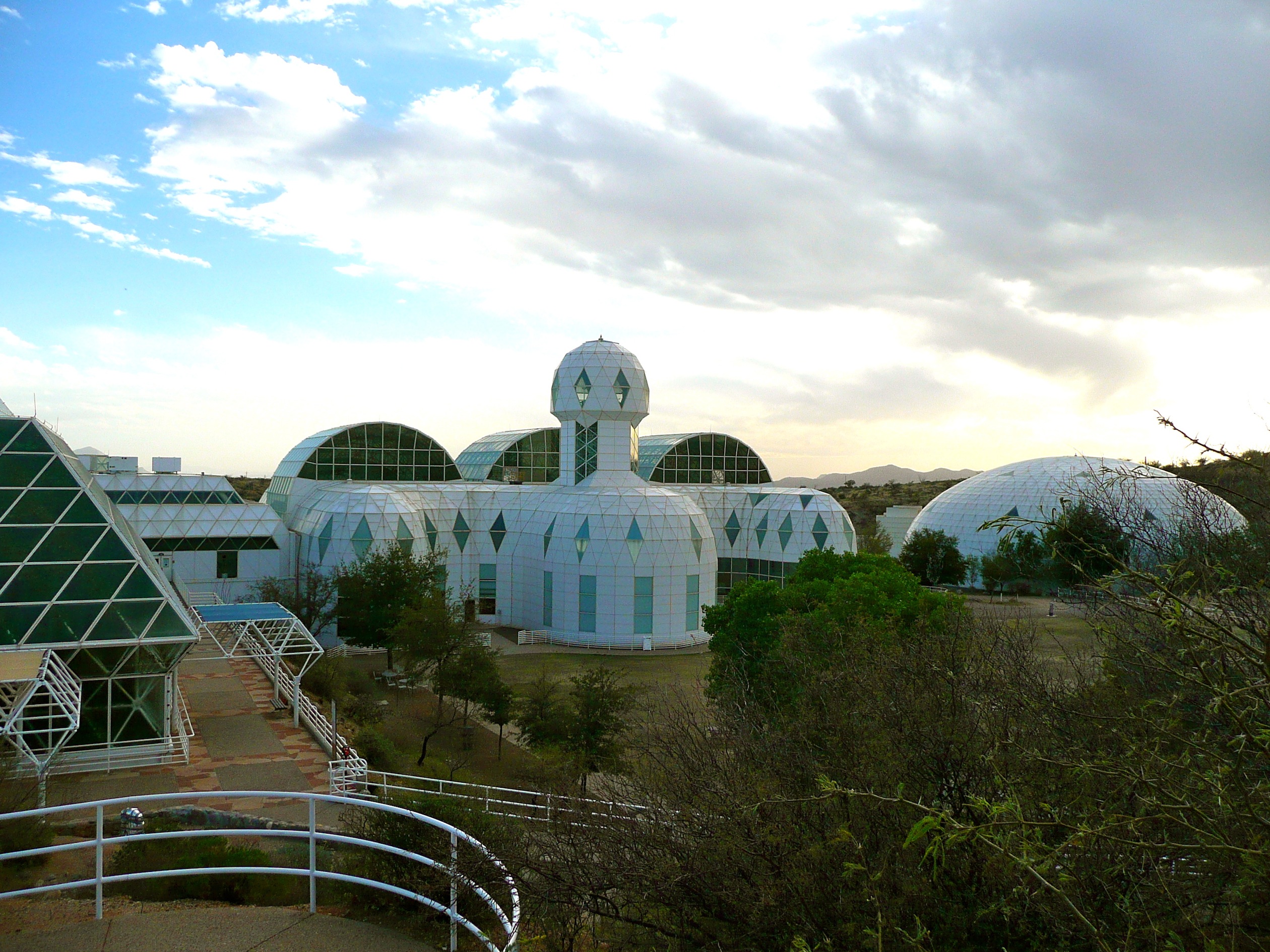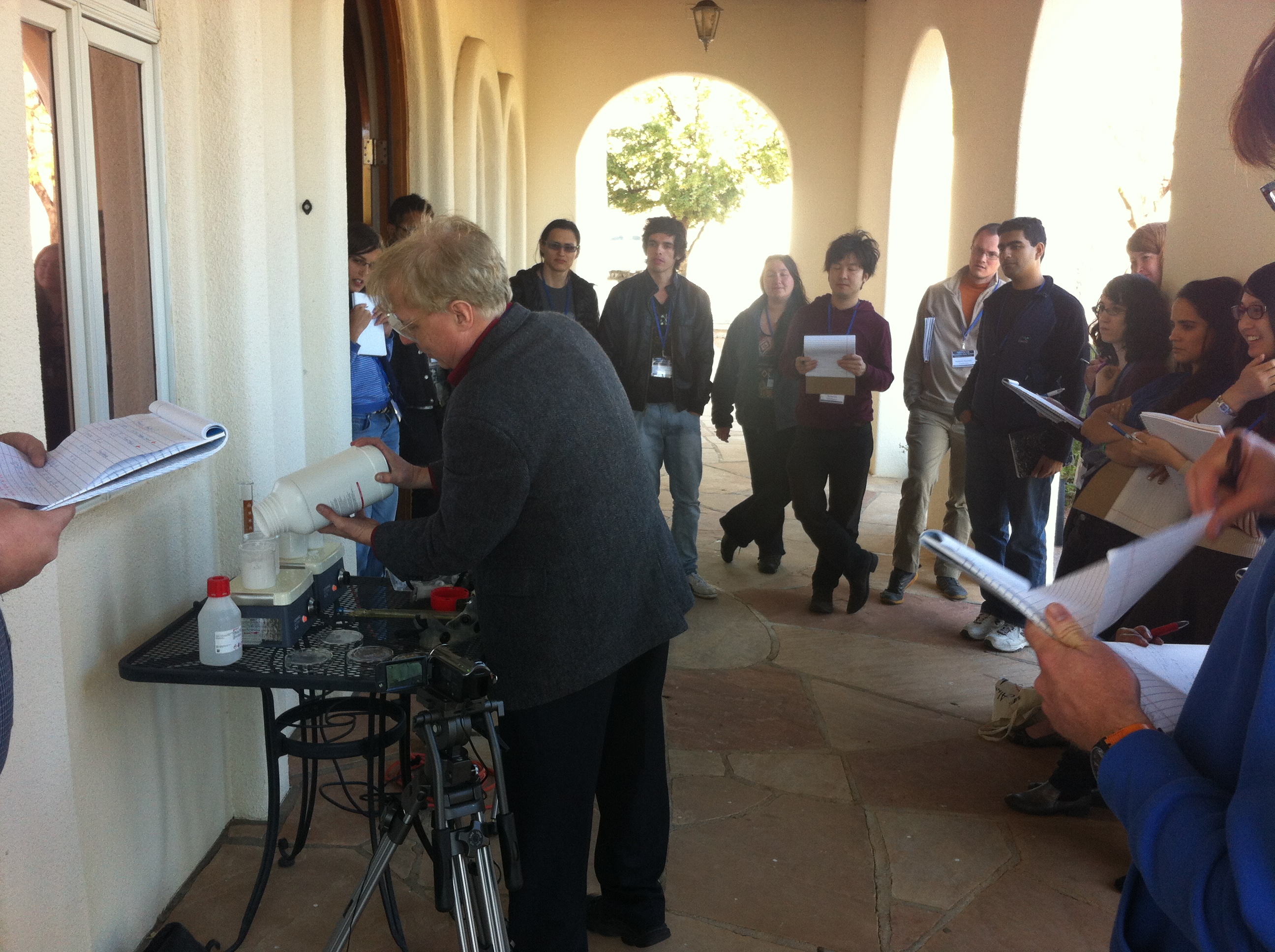In addition to our Annual Astrobiology Workshop, the UWAB Program encourages, supports, and in many cases organizes educational experiences for astrobiology students in our program and around the world. This year, our students studied astrobiology in Spain, Belgium and Arizona.
The 2014 International Summer School in Astrobiology — Santander, Spain
The International Summer School in Astrobiology is an annual event that is jointly supported by the U.S. (through the NASA Astrobiology Institute) and European governments. The school is held each year in the seaside village of Santander, in northern Spain, at the summer campus of the Universidad Internacional Menéndez Pelayo (UIMP). The curriculum includes lectures from international experts, group discussions, student projects, and an excursion to a nearby site of astrobiological interest. This year, the school was co-directed by Dr. Javier Gómez-Elvira, the Director of the Centro de Astrobiología in Spain, and our UWAB Director, Prof. Victoria Meadows. This year’s science theme was Habitable Environments in the Universe. “The school provided an interdisciplinary examination of the nature and evaluation of habitability, an environment’s ability to support life. Topics included life’s requirements and the limits of life, the factors that affect habitability for local and global environments, and potentially habitable environments in our Solar System and on extrasolar planets.” UW Prof. Meadows gave an introductory lecture on factors affecting planetary habitability, and Prof. Rory Barnes gave lectures on stellar gravitational effects on planetary orbits and habitability. Over 30 students from the US and Europe attended the school.
Matt Tilley, a graduate student in the Earth & Space Sciences department, had this to say about the school:
“The week’s investigation into the underpinnings of habitable environmentsthroughout the universe, when combined with immersion into Spanish culture, was the highlight of my summer – both professionally and personally. The efforts of an international array of lecturers and fruitful discussions with fellow students provided a robust and invaluable learning experience that did and will contribute strongly to my development as an astrobiologist. Discussions ranged from thermodynamic analysis of life’s basics – both as we know it on Earth and the potential for other biochemical systems elsewhere, to gravitational effects on habitability to subsurface microbiology – and more. Despite this wide-ranging interdisciplinary diversity, all topics were comprehensibly incorporated to generate an abstract framework in which universal habitability could be discussed. I highly recommend that any burgeoning astrobiologist attend this intense and immersive experience”
Complex Planetary System Symposium in Namur, Belgium

This past July, UWAB graduate student Russell Deitrick (Astronomy) attended the Complex Planetary Systems Symposium, an International Astronomy Union symposium, hosted by the Université de Namur in Belgium. To read about his adventure, click here. Student support for Russell was provided by the NAI’s Virtual Planetary Lab.
EBI School: The Search for Life Beyond the Solar System. Exoplanets, Biosignature & Instruments
By Prof. Rory Barnes
From March 14-16, 2014 UWAB professor Rory Barnes was the dean of an

astrobiology school at Biosphere 2 in Oracle, AZ. The school taught 30 graduate students and post-docs from 9 countries, and from disciplines ranging from astronomy to biology, the fundamentals of searching for life on exoplanets. Prof. Barnes gave lectures on planet formation and the full breadth of requirements for a planet to be habitable. Additionally UWAB professor John Baross lectured on the origin and limits of life. Distinguished scientists from other institutions, including Olivier Guyon, George Ricker and Steve Benner also provided lectures on detection techniques and the origin of life.
In addition to lectures, the students engaged in hands-on experiences led by the school professors on different aspects of the search for life. The activities included designing missions to identify habitable planets, and biochemistry experiments that revealed key aspects of the origin of life. After completing the activities, the students taught each other what they had learned, thereby becoming the teachers. UW astrobiology students Giada Arney, Russell Deitrick, Josh Krissensen-Totton and Rodrigo Luger attended the school.
Photos: (From Top to Bottom)
1) Santander, Spain: The location for the 2014 International Summer School in Astrobiology.
2) Russell Deitrick at the Palais de Justice in Brussels.
3) Bioshere2 in Tucson, Arizona.
4) Dr. Steve Benner demonstrates a classic astrobiology experiment to students of the Astrobiology School at Biosphere 2 in Arizona: A container holds a mixture of simple, non-reacting organic ingredients that is eventually struck by a cosmic ray and initiates important pre-biotic chemical reactions. A cosmic ray is usually a proton or atomic nucleus accelerated to nearly the speed of light by galactic processes like supernova explosions. The particle provides enough energy to start a chain reaction in which the simple ingredients transform into larger, more complex molecules. Sure enough, after about 20 minutes the initially white mixture began to turn brown, seemingly out of nowhere. This experiment demonstrates the inherent interdisciplinary nature of astrobiology, in which prebiotic chemistry on Earth is connected to astrophysical phenomena occurring thousands of light years away.


